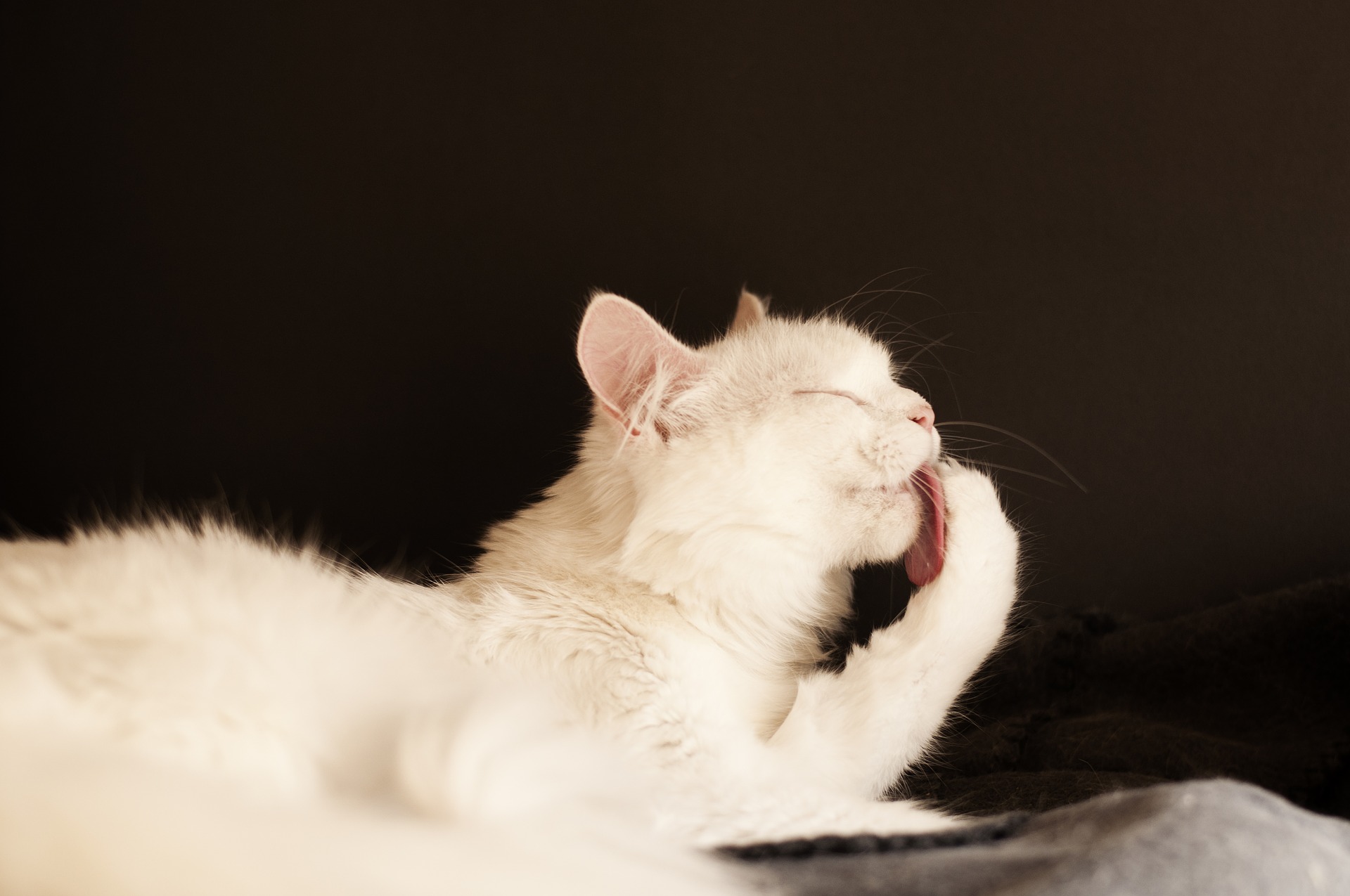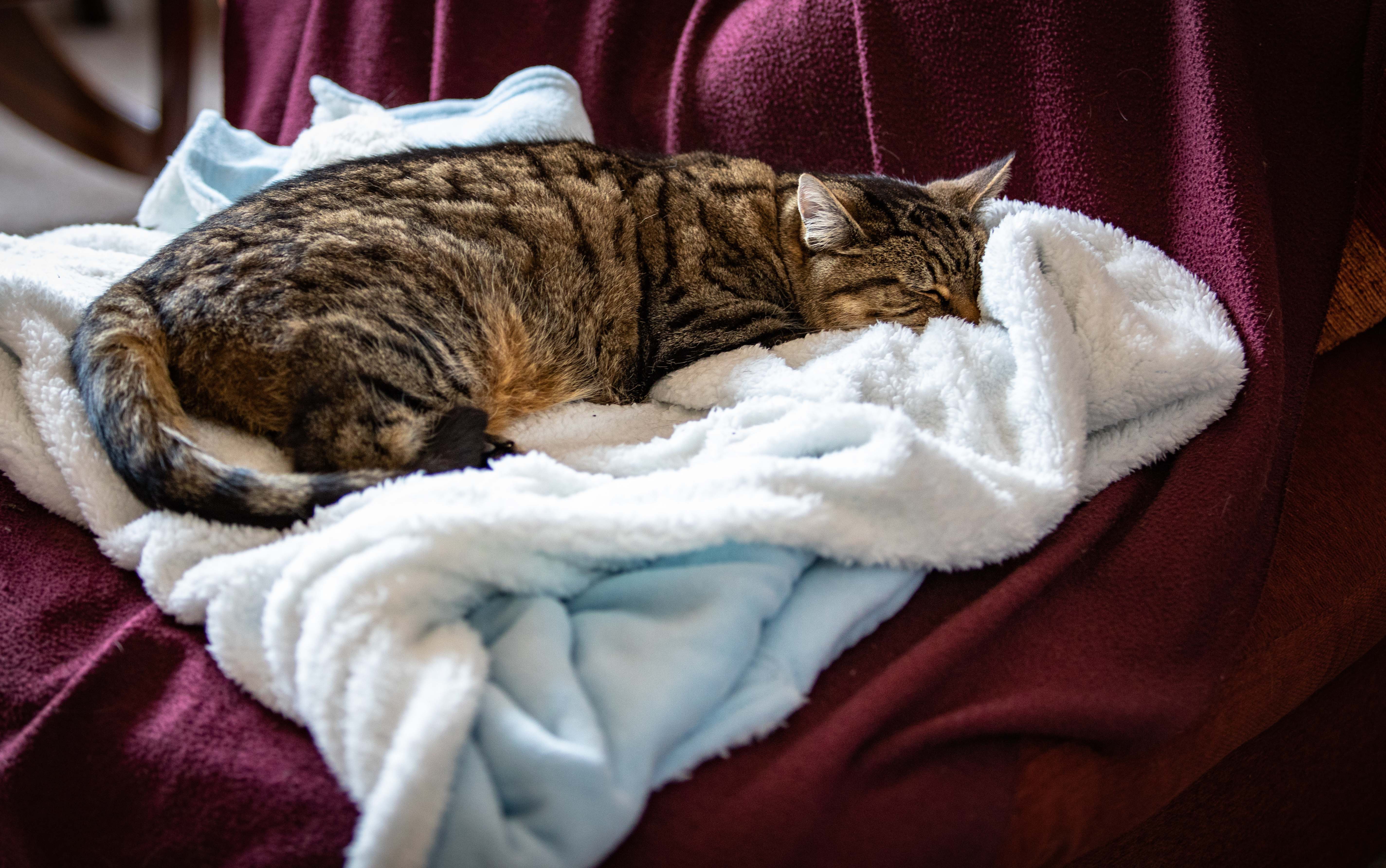
4 Self-Soothing Behaviors That Might Indicate Feline Anxiety
Cats are creatures of habit, and they don’t usually appreciate their homes and routines changing abruptly. In cases of stress and anxiety, cats may begin exhibiting symptoms that harken back to their desire for routine. However, these routine behaviors are often to the detriment of your furry friend.
When stressed, your cat may start using compulsive behaviors as a way to calm themselves down and deal with their anxiety. Here are some of the most common self-soothing behaviors in cats and what you should do if you notice them.
Compulsive behaviors as signs of stress
Compulsive, self-soothing behaviors may manifest as a result of a cat’s anxiety or stress. These compulsive behaviors are a form of feline obsessive-compulsive disorder (OCD) and may help cats soothe themselves when they are agitated. Self-soothing and compulsive behaviors may also begin when your cat reaches old age and their cognitive skills begin to decline.

Compulsive behaviors may trigger a hormonal release that makes the cat feel better, leading to the continuation and repetition of the behaviors over time. If the source of your cat’s anxiety is not mitigated and the cat is allowed to repeat their self-soothing behaviors, there may not be an easy way to stop them in the future. These behaviors may also be reinforced by the pet parent on accident if the owner provides a reward like food or attention after the cat begins acting compulsively.
Self-soothing or compulsive behaviors can sometimes be difficult to identify without close observation or the observation of a harmful side effect because they often appear as normal feline behaviors. Here are four of the most common:
- Over-grooming: One of the most common compulsive behaviors cats use to soothe themselves during times of stress is grooming. Although cats groom themselves on a daily basis, anxious cats may begin to groom themselves excessively, licking and biting their skin and fur to the point where they begin to develop bald spots and even skin problems. Over-grooming can quickly lead to skin wounds and infections.
- Pacing: A stressed cat may begin to pace throughout the home, following a strict path within one or multiple rooms. Pacing may begin intermittently and only occur during stressful periods, but your cat may begin to pace more frequently once a compulsive behavior has been established. Pacing may also occur in rooms you and your family are in, as if your cat is checking to make sure you are still present.
- Sucking or chewing: Some cats develop preferences for particular fabric types and begin to suck or chew on objects, including things like blankets and sweaters. Repeated sucking and chewing on objects may be a form of self-soothing for anxious cats, but the behavior can lead to the destruction of the household object over time. Additionally, some cats will begin to ingest the fabric they suck or chew on, which could potentially lead to dangerous intestinal blockages.
- Vocalizing: Anxious cats may start to vocalize much more frequently than they have in the past. This behavior often presents as repeated, distressed-sounding meows over short periods of time. They may increase in frequency over time. Some cats tend to vocalize while pacing, as well.
What to do when you notice compulsive behavior

If you see your kitty exhibiting compulsive, self-soothing behaviors, think about whether there was a recent change in your home that could have triggered your cat’s stress or anxiety. Changes in the household, such as a new family member or pet, changes in your daily routine or even alterations in the layout of a room can trigger anxiety in cats.
If you cannot recall a potential trigger, it’s possible that your cat developed separation anxiety or OCD for another reason. Regardless of the cause, you should consult your veterinarian to explain the behaviors you’ve noticed and when you believe they started. Your vet will likely conduct a physical exam to ensure your cat is not reacting to underlying pain or illness.
If your cat is indeed experiencing a psychological problem, you’ll need to create a plan to help manage your cat’s stress in the home. This may include behavioral therapy for your kitty or, in extreme cases, medication to calm your cat’s irrational fears.
In many cases, pet parents can work hard to eliminate sources of stress from the home and use training to desensitize their cat to their triggers. Pheromones and supplements may also be useful in promoting calm, stable behavior in your kitty.
Throughout treatment for your cat’s anxiety, refrain from “rewarding” compulsive behavior with attention or treats. Rewarding these behaviors may ingrain them in your cat’s mind and make it harder for your cat to break the habit.
Without treatment, your cat’s anxiety is likely to worsen, and their self-soothing, compulsive behavior may increase in frequency. It’s very important to watch for these signs of stress and take immediate action, both to help your cat live a calm, comfortable life and to prevent any potential harm that could result from their OCD-like behavior.


